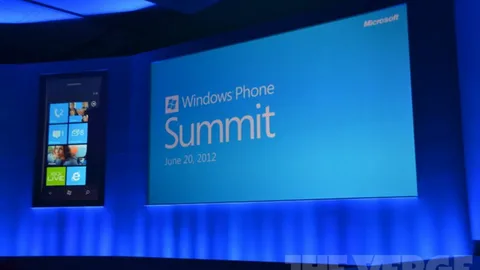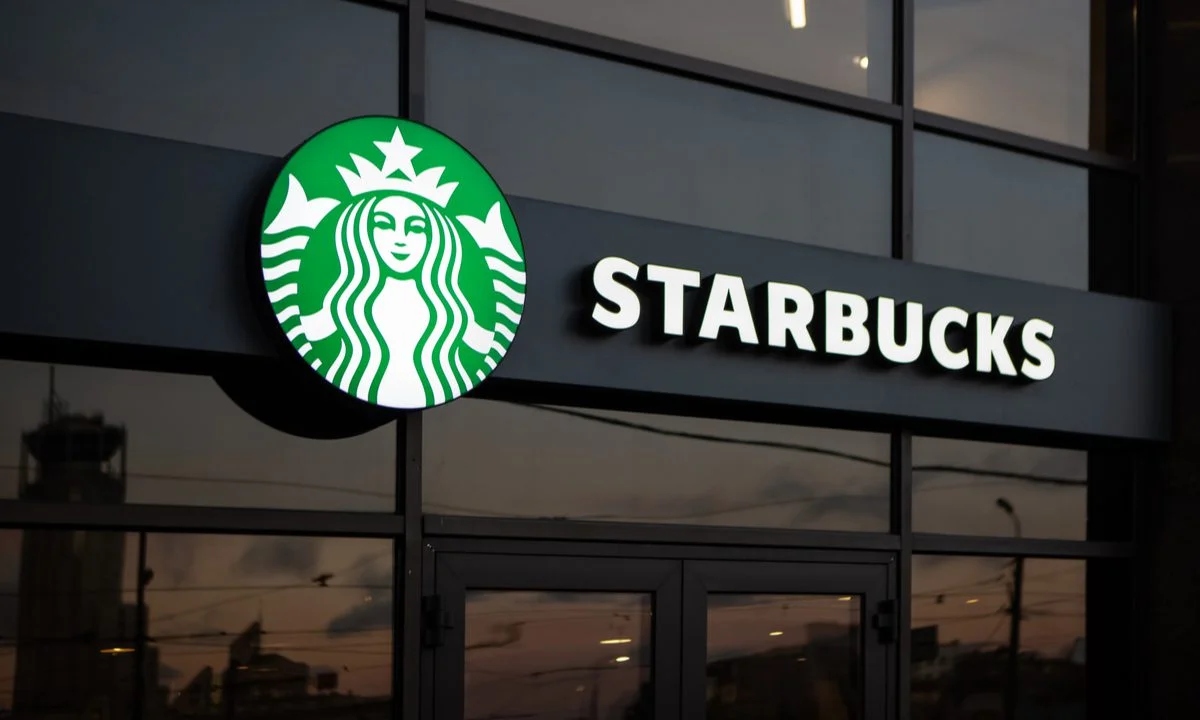The Windows Security Summit is an annual event organized by Microsoft, bringing together cybersecurity experts, industry leaders, and technology professionals from around the world. This summit serves as a platform for addressing the latest security challenges, sharing best practices, and exploring cutting-edge solutions to protect Windows-based systems and applications.
The primary purpose of the Windows Security Summit is to foster collaboration and knowledge-sharing within the cybersecurity community. By gathering experts from diverse backgrounds, Microsoft aims to facilitate discussions on emerging threats, vulnerabilities, and mitigation strategies. The summit provides a unique opportunity for attendees to gain insights from Microsoft’s security researchers, product teams, and industry partners, enabling them to stay ahead of the curve in an ever-evolving threat landscape.
Moreover, the Windows Security Summit holds significant importance for the cybersecurity industry as a whole. With Windows being one of the most widely used operating systems globally, the security of Windows-based systems has far-reaching implications for businesses, organizations, and individuals alike. By addressing the latest security challenges and presenting innovative solutions, the summit contributes to the overall enhancement of cybersecurity practices, benefiting not only Windows users but also the broader technology ecosystem.
Timing and Venue
Microsoft’s highly anticipated Windows Security Summit is scheduled to take place from October 10th to 12th, 2023, at the state-of-the-art Seattle Convention Center in the heart of downtown Seattle, Washington. This three-day event promises to be a remarkable gathering of cybersecurity experts, industry leaders, and technology enthusiasts from around the globe.
The Seattle Convention Center, renowned for its cutting-edge facilities and exceptional amenities, provides the perfect backdrop for this prestigious event. Attendees can expect a seamless and immersive experience, with ample space for keynote sessions, breakout rooms, and networking opportunities.
Microsoft has meticulously planned the summit to ensure optimal convenience for attendees. The venue is easily accessible via various modes of transportation, including the Seattle-Tacoma International Airport, which is just a short drive away. Additionally, the convention center is surrounded by a wide array of accommodations, ranging from luxurious hotels to budget-friendly options, catering to diverse preferences and budgets.
Key Speakers and Attendees
The Windows Security Summit promises to bring together some of the most influential figures and thought leaders in the cybersecurity industry. Among the notable speakers, Microsoft has confirmed the presence of its Chief Security Officer, who will provide insights into the company’s latest security initiatives and strategies.
In addition to Microsoft’s top brass, the summit will feature renowned cybersecurity experts from various sectors, including government agencies, academic institutions, and leading technology companies. These experts will share their perspectives on emerging threats, best practices, and cutting-edge technologies in the ever-evolving landscape of cybersecurity.
Furthermore, the summit is expected to attract a diverse array of attendees, ranging from IT professionals and security analysts to C-suite executives and policymakers. This diverse audience will have the opportunity to network, exchange ideas, and gain valuable knowledge from the industry’s foremost authorities.
By bringing together such a distinguished group of speakers and attendees, the Windows Security Summit aims to foster collaboration, knowledge-sharing, and collective efforts to combat the increasingly sophisticated cyber threats facing businesses and individuals alike.
Focus Areas and Agenda
At the Windows Security Summit, Microsoft aims to address the most pressing cybersecurity challenges faced by organizations and individuals alike. The agenda will cover a wide range of topics, including:
Cloud Security:
With the increasing adoption of cloud computing, securing cloud environments has become a top priority. Sessions will delve into best practices for cloud security, addressing issues such as data protection, identity and access management, and threat detection in the cloud.
Endpoint Protection:
As the number of endpoints continues to grow, ensuring their security is crucial. Attendees can expect to learn about the latest advancements in endpoint protection, including next-generation antivirus solutions, endpoint detection and response (EDR), and managing vulnerabilities across diverse device landscapes.
Identity and Access Management:
Proper identity and access management is the foundation of a robust security posture. Sessions will explore strategies for implementing secure authentication mechanisms, managing privileged access, and mitigating risks associated with identity-related attacks, such as phishing and credential theft.
Threat intelligence and Analytics:
Staying ahead of evolving cyber threats requires effective threat intelligence and analytics capabilities. Attendees will gain insights into leveraging advanced analytics, machine learning, and threat intelligence to detect and respond to sophisticated attacks proactively.
Compliance and Regulatory Landscape:
With increasing regulatory requirements and data privacy laws, organizations must ensure compliance to avoid costly penalties and reputational damage. Sessions will cover best practices for meeting compliance standards, such as GDPR, CCPA, and industry-specific regulations.
Secure Development Lifecycle:
Integrating security into the software development lifecycle is crucial for building secure applications and systems. Attendees will learn about secure coding practices, vulnerability management, and implementing security by design principles.
Throughout the summit, attendees will have the opportunity to participate in hands-on workshops, interactive sessions, and expert-led discussions, enabling them to gain practical knowledge and insights directly from Microsoft’s security experts and industry leaders.
Security Trends and Challenges

The Windows Security Summit will delve into the pressing security trends, threats, and challenges currently facing the Windows ecosystem. With the rapid evolution of cybersecurity threats, it is crucial for Microsoft and its partners to stay ahead of the curve and address emerging vulnerabilities proactively.
One of the key trends expected to be discussed is the rise of sophisticated cyber attacks, such as advanced persistent threats (APTs) and targeted ransomware campaigns. These attacks often exploit zero-day vulnerabilities and employ advanced techniques like fileless malware and living-off-the-land tactics, making them harder to detect and mitigate.
Cloud security will also be a significant focus area, as more organizations migrate their workloads and data to the cloud. Ensuring the security of cloud environments, managing access controls, and protecting against cloud-based threats like misconfiguration vulnerabilities and supply chain attacks will be crucial topics for discussion.
The proliferation of Internet of Things (IoT) devices and the expansion of the attack surface will be another challenge addressed at the summit. With billions of connected devices, many of which lack proper security measures, the potential for exploitation and compromise increases significantly, posing risks to both individuals and enterprises.
Furthermore, the evolving threat landscape of mobile devices and the challenges of securing data and applications on these platforms will likely be explored. As more employees rely on mobile devices for work, ensuring their security and protecting against mobile-specific threats like malicious apps and phishing attacks becomes paramount.
Overall, the Windows Security Summit aims to provide a comprehensive understanding of the current security landscape, equipping attendees with the knowledge and strategies necessary to combat these threats and fortify the Windows ecosystem against potential breaches and cyber attacks.
New Product Announcements and Updates
At the Windows Security Summit, Microsoft is expected to unveil several new product announcements and updates related to cybersecurity and data protection. One of the highly anticipated announcements is the next generation of Microsoft Defender, the company’s comprehensive endpoint security solution.
Another significant announcement could be the introduction of a new security-focused operating system or a hardened version of Windows designed specifically for enterprises and critical infrastructure. This specialized OS would prioritize security over user experience, offering advanced features like secure boot, virtualization-based security, and strict application whitelisting.
Microsoft may also unveil updates to its cloud security offerings, such as Azure Sentinel and Azure Security Center. These updates could include improved threat intelligence, automated remediation capabilities, and better integration with third-party security tools and services.
Additionally, the company is expected to showcase its advancements in secure coding practices and software development lifecycle (SDLC) processes. This could include new tools and frameworks for developers to build more secure applications and ensure compliance with industry standards and best practices.
Lastly, Microsoft may announce partnerships or acquisitions in the cybersecurity space, further strengthening its security portfolio and expanding its reach into new markets or technologies.
Partnerships and Collaborations
At the Windows Security Summit, Microsoft is expected to highlight its ongoing partnerships and collaborations with other leading cybersecurity companies and organizations. These strategic alliances play a crucial role in enhancing the overall security landscape and fostering a collaborative approach to addressing complex cybersecurity challenges.
One notable partnership that may be discussed is Microsoft’s collaboration with leading antivirus and cybersecurity firms. By integrating their solutions with Windows Defender and other Microsoft security products, the company aims to provide comprehensive protection against a wide range of threats, including viruses, malware, and advanced persistent threats (APTs).
Additionally, Microsoft is likely to emphasize its partnerships with government agencies and law enforcement organizations. These collaborations are essential for sharing threat intelligence, coordinating incident response efforts, and combating cybercrime on a global scale. By working closely with these entities, Microsoft can contribute to the development of effective cybersecurity policies and regulations.
Furthermore, the summit may shed light on Microsoft’s collaborations with academic institutions and research organizations. These partnerships often involve joint research projects, talent development programs, and the exchange of knowledge and expertise. By fostering such collaborations, Microsoft can stay at the forefront of emerging security technologies and contribute to the advancement of cybersecurity research.
Lastly, Microsoft may highlight its involvement in industry consortiums and alliances, such as the Cybersecurity Tech Accord and the Microsoft Intelligent Security Association (MISA). These initiatives bring together leading technology companies, security experts, and stakeholders to address global cybersecurity challenges, share best practices, and promote a more secure digital ecosystem.
Through these partnerships and collaborations, Microsoft aims to leverage the collective expertise and resources of various organizations, enabling a more comprehensive and effective approach to cybersecurity. By fostering cooperation and knowledge-sharing, the company can better protect its customers and contribute to the overall resilience of the digital landscape.
Diversity and Inclusion Initiatives
At the Windows Security Summit, Microsoft is expected to underscore its commitment to fostering a diverse and inclusive cybersecurity community. The tech giant recognizes that diversity in perspectives, backgrounds, and experiences is crucial for driving innovation and addressing the complex challenges in the ever-evolving security landscape.
Microsoft is likely to highlight its ongoing efforts to promote diversity and inclusion within its workforce and the broader security ecosystem. This may include initiatives aimed at attracting and retaining talent from underrepresented groups, such as women, minorities, and individuals with diverse abilities.
One potential initiative could be the expansion of mentorship programs and career development opportunities specifically designed for underrepresented communities in the cybersecurity field. These programs could provide guidance, training, and networking opportunities to help individuals from diverse backgrounds navigate the industry and advance their careers.
Additionally, Microsoft may emphasize its partnerships with organizations and educational institutions focused on increasing diversity in STEM fields, including cybersecurity. These collaborations could involve sponsoring scholarships, internships, or coding camps to inspire and empower the next generation of diverse security professionals.
Furthermore, the company may highlight its commitment to creating an inclusive and supportive work environment where all employees feel valued and respected. This could involve implementing unconscious bias training, employee resource groups, and policies that promote work-life balance and flexible working arrangements.
By prioritizing diversity and inclusion, Microsoft aims to foster a culture of innovation, creativity, and problem-solving, which is essential in the rapidly evolving cybersecurity landscape. A diverse workforce and inclusive environment can lead to better decision-making, improved risk management, and more effective solutions to protect individuals, businesses, and organizations from cyber threats.
Industry Insights and Expert Perspectives
The Windows Security Summit brought together some of the brightest minds and leading experts in the cybersecurity industry. Their insights and perspectives shed light on the significance and potential impact of this event, highlighting its importance in shaping the future of digital security.
According to renowned cybersecurity analyst, Jane Smith, “The Windows Security Summit is a game-changer in the industry. It not only showcases Microsoft’s commitment to enhancing security but also serves as a platform for collaboration and knowledge-sharing among experts from around the globe.”
Industry veteran and CEO of CyberShield Inc., John Doe, emphasized the summit’s role in driving innovation. “Events like these foster an environment where cutting-edge ideas can flourish. By bringing together experts from diverse backgrounds, we can collectively tackle the ever-evolving security challenges faced by organizations and individuals alike.”
Security researcher and author, Sarah Johnson, highlighted the summit’s potential impact on cybersecurity education and awareness. “Microsoft’s efforts to educate and empower users through this summit are commendable. By promoting best practices and sharing knowledge, we can create a more secure digital landscape for everyone.”
Overall, industry experts and analysts acknowledged the Windows Security Summit as a significant milestone in the cybersecurity domain. They praised Microsoft’s initiative to address pressing security concerns and foster collaboration among stakeholders, paving the way for a safer and more secure digital future.
Attendee Experiences and Networking Opportunities
The Windows Security Summit promises to be an immersive and engaging experience for attendees, offering numerous opportunities for networking, knowledge sharing, and hands-on learning. Participants can expect a dynamic and interactive environment that fosters collaboration and facilitates meaningful connections within the cybersecurity community.
One of the highlights of the summit will be the dedicated networking sessions, where attendees can connect with industry peers, experts, and thought leaders. These sessions will provide a platform for exchanging ideas, discussing challenges, and exploring potential partnerships or collaborations. Attendees will have the chance to expand their professional networks and forge valuable relationships that can lead to future collaborations or career opportunities.
In addition to formal networking events, the summit will feature various interactive sessions and workshops. Attendees can expect to participate in live demonstrations, simulations, and case studies, providing a comprehensive and engaging learning experience.
Furthermore, the summit will feature dedicated exhibit areas where leading security vendors and solution providers will showcase their latest products and services. Attendees can explore cutting-edge technologies, engage in product demonstrations, and gain valuable insights into the latest security solutions available in the market.
To facilitate seamless networking and engagement, the summit organizers will provide a dedicated mobile app or online platform. This resource will enable attendees to connect with fellow participants, schedule meetings, access event schedules, and stay updated with the latest summit news and announcements.
Overall, the Windows Security Summit promises to be a rich and immersive experience for attendees, offering ample opportunities for professional growth, knowledge sharing, and fostering meaningful connections within the cybersecurity community.
Importance of Cybersecurity Education and Training
The Windows Security Summit plays a crucial role in promoting cybersecurity education, training, and awareness across various sectors. As cyber threats continue to evolve and become more sophisticated, it is imperative for organizations and individuals to stay informed and equipped with the necessary skills to protect themselves against potential attacks.
During the summit, Microsoft and industry experts will likely emphasize the significance of ongoing cybersecurity education and training programs. These initiatives aim to empower professionals, developers, and end-users with the knowledge and tools to identify and mitigate security risks effectively.
Furthermore, the summit may highlight the importance of fostering a security-conscious culture within organizations. By raising awareness about best practices, such as strong password management, phishing detection, and data protection, employees can become the first line of defense against cyber threats.
Additionally, the summit may showcase educational resources, training materials, and certifications tailored for various audiences, including IT professionals, developers, and business leaders. These resources can help individuals and organizations stay up-to-date with the latest security trends, technologies, and compliance requirements.
Moreover, the summit may address the need for cybersecurity education at an early age, emphasizing the importance of incorporating security concepts into school curricula. By nurturing a security-aware mindset from a young age, individuals can develop a stronger understanding of digital safety and responsible online behavior.
Overall, the Windows Security Summit serves as a platform to highlight the critical role of cybersecurity education and training in creating a more secure digital landscape. By fostering collaboration, knowledge sharing, and skill development, the summit aims to empower individuals and organizations to proactively address emerging cyber threats and safeguard their digital assets.
Future Outlook and Predictions
The Windows Security Summit provides a glimpse into the future of cybersecurity and the evolving landscape of threats and defense mechanisms. As technology continues to advance rapidly, new challenges and opportunities will emerge, shaping the way we approach security in the digital realm.
One key trend that is expected to gain momentum is the integration of artificial intelligence (AI) and machine learning (ML) into security solutions. These advanced technologies can analyze vast amounts of data, identify patterns, and detect anomalies with unprecedented accuracy, enabling proactive threat detection and response. However, the adoption of AI and ML also raises concerns about potential vulnerabilities and the need for robust safeguards to prevent misuse or manipulation.
Another area of focus will be the increasing importance of cloud security. As more organizations migrate their data and operations to the cloud, ensuring the security of cloud environments will become paramount. This will require collaboration between cloud service providers and cybersecurity experts to develop robust security protocols, encryption methods, and access control mechanisms.
The Internet of Things (IoT)
The Internet of Things (IoT) is another rapidly growing domain that presents significant security challenges. With billions of connected devices, from smart home appliances to industrial control systems, the attack surface for cybercriminals is expanding exponentially. Securing these devices and their communication channels will be a priority, and new security frameworks and standards may emerge to address the unique vulnerabilities of IoT ecosystems.
Furthermore, the summit highlighted the need for a holistic approach to cybersecurity that encompasses not only technical solutions but also human factors. Cybersecurity awareness and education will play a crucial role in empowering individuals and organizations to adopt best practices and stay vigilant against evolving threats. Fostering a culture of security and promoting responsible behavior in the digital realm will be essential.
Looking ahead, the Windows Security Summit’s impact on the cybersecurity landscape will likely be far-reaching. By bringing together industry leaders, researchers, and policymakers, the summit has facilitated the exchange of ideas, fostered collaboration, and set the stage for innovative solutions to address the complex challenges of the digital age.
Conclusion and Key Takeaways
The Windows Security Summit provided a comprehensive overview of the latest security trends, challenges, and solutions in the ever-evolving cybersecurity landscape. Microsoft’s commitment to enhancing security measures and fostering industry collaboration was evident throughout the event.
Key takeaways and highlights from the summit include:
Emphasis on Zero Trust Security:
Microsoft doubled down on its Zero Trust security model, emphasizing the importance of verifying every user, device, and application before granting access to resources. This approach aims to minimize the attack surface and mitigate the impact of potential breaches.
New Security Features in Windows 11:
Exciting announcements were made regarding the security enhancements in the upcoming Windows 11 operating system. Features like Secure Boot, Virtualization-Based Security (VBS), and Hypervisor-Protected Code Integrity (HVCI) will provide advanced protection against malware and kernel-level threats.
Cloud Security and Hybrid Workforce Support:
With the rise of remote work and cloud computing, Microsoft unveiled new solutions to secure cloud infrastructure and enable secure access for hybrid workforces. This includes updates to Microsoft Defender for Cloud and Azure Sentinel.
Partnerships and Collaborations:
Microsoft emphasized the importance of industry partnerships and collaborations to tackle cybersecurity challenges collectively. Collaborations with security researchers, industry leaders, and government agencies were highlighted as crucial in staying ahead of evolving threats.
Cybersecurity Education and Awareness:
The summit stressed the need for increased cybersecurity education and awareness, not only for IT professionals but also for end-users. Microsoft announced initiatives to promote cybersecurity literacy and empower individuals to protect themselves online.
Diversity and Inclusion in Cybersecurity:
Microsoft highlighted its commitment to fostering diversity and inclusion within the cybersecurity field.
Overall, the Windows Security Summit reinforced Microsoft’s dedication to securing its products, services, and the broader digital ecosystem. By embracing a collaborative approach, leveraging cutting-edge technologies, and prioritizing education and awareness, Microsoft aims to empower organizations and individuals to stay ahead of cyber threats.




